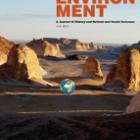Mahato, Nirmal Kumar. “Environmental Change and Chronic Famine in Manbhum, Bengal District, 1860-1910.” Global Environment 6 (2011): 68–94. Republished by the Environment & Society Portal, Multimedia Library. http://www.environmentandsociety.org/node/7557.
The present paper examines the chronic occurrence of famine in Manbhum after the 1860s due to environmental degradation. Colonial intervention from the late 18th century onwards led to a process of transformation of the area. Ecological intervention was the prime factor behind this transformation. The agrarian conquest of Manbhum in the 19th century not only changed the local land use pattern, it transformed the agrarian structure and led to deforestation. The increase in commodity production and the expansion of monoculture badly shook the ecological balance of the area. Environmental change ultimately led to water and nutritional crises. The denudation of forests deprived people of alternative food sources during scarcity. Though the British idea of progress was based on agricultural advancement, this was carried out at the expense of the forest and was quite unsuited to the characteristics of the area. In general, monocultures of short-lived annual plants, a typical agricultural strategy in temperate zones, are inappropriate for tropical regions. The sustainable economy of the local adivasis (aboriginals) was permanently destabilised, and the district made vulnerable to famine. In the late 19th century the area faced several harsh famines. The adivasis tried to survive on the products of what was left of the jungle as their paddy crops failed. They not only collected starchy root tubers such as pan alu, a wild variety of ole (Amophophallus campanulatus [Araceae]), and others, and the flowers of the mahua (Madhuca indica, Gmelin [Combretaceae]) as a primary food source from forests, and tamarind leaves (Tamarindus indica L., Family Leguminosae) as spice, but also cultivated indigenous low-cost cereals such as eri, gundlu, marua, sama, and others for survival. These cereals, although their yields were low, could be cultivated even under drought conditions because of their low water requirements (jowar, bazra and ragi were also used for the same purpose).
— Text from The White Horse Press website
All rights reserved. Made available on the Environment & Society Portal for nonprofit educational purposes only, courtesy of Nirmal Kumar Mahato, and XL edizioni.


